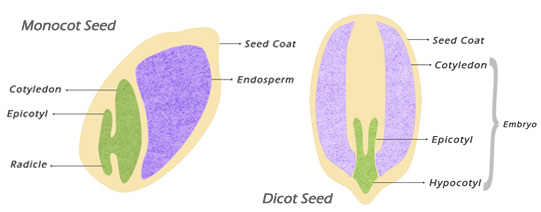
Every root grows a mass of tiny hairs near its tip to absorb water from the soil.
Root hair are
cells. They take water to the main root. Then the main root brings the water to the main plant. The roots also help hold the plant in the ground.
The inside of a root has four different parts. The
epidermis is the outside part. It is like our skin. It protects the inside parts of the root. Plants take in water from the soil through their roots. The water passes through the
vascular rays until it reaches the center of the root, the
stele (endodermis). This is where the veins are located. The veins are called xylem. They carry the water and food through the plant. Between the epidermis and the stele is the fleshy
cortex.

Cross section of a root.

Vascular system of plants which consists of xylem and phloem.

















